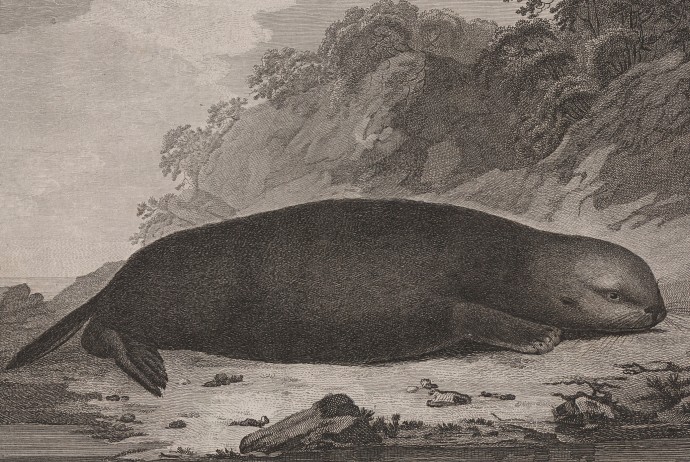I just got back from a wonderful visit to the Monterey Bay Aquarium – one of my favorite places in California. I have been going there since I was young, and this week I was thrilled to give an in-house seminar on the sea otter genomics project. The Aquarium has sent us samples and given great advice as we move forward with the project and it was a pleasure to get to tell them more details about the project and see such enthusiasm for otter genomics from the audience – which ranged from volunteer guides to the Aquarium’s scientists. Thank you to everyone at the Aquarium, but especially Athena Copenhaver who coordinated my whole visit and made me so welcome.
The day before my talk I went out on a whale watch and saw a large group of lunge-feeding humpbacks, dozens of common dolphins, and an ocean sunfish. Things got more intense when a pod of seven killer whales came onto the scene – the humpbacks trumpeted and became very defensive, and the dolphins scattered. One dolphin didn’t make it, and the orca pod efficiently and swiftly attacked it. I have never seen an orca predation event before, and it was as remarkable as it was grisly. They had a calf with them that was being taught to hunt by its mother and grandmother.
On the way back to my hotel, I passed a female otter and her pup in the harbor by Fisherman’s Wharf – it might have been “Bixby,” a female featured on the BBC/PBS’ Big Blue Live.
Keep an eye out for a longer blog post about my talk here and on the Aquarium blog!
-

-
Sea otter female and pup in front of Fisherman’s Wharf
-

-
Pod of killer whales
-

-
Synchronized humpbacks
-

-
Ocean sunfish (Mola mola)









